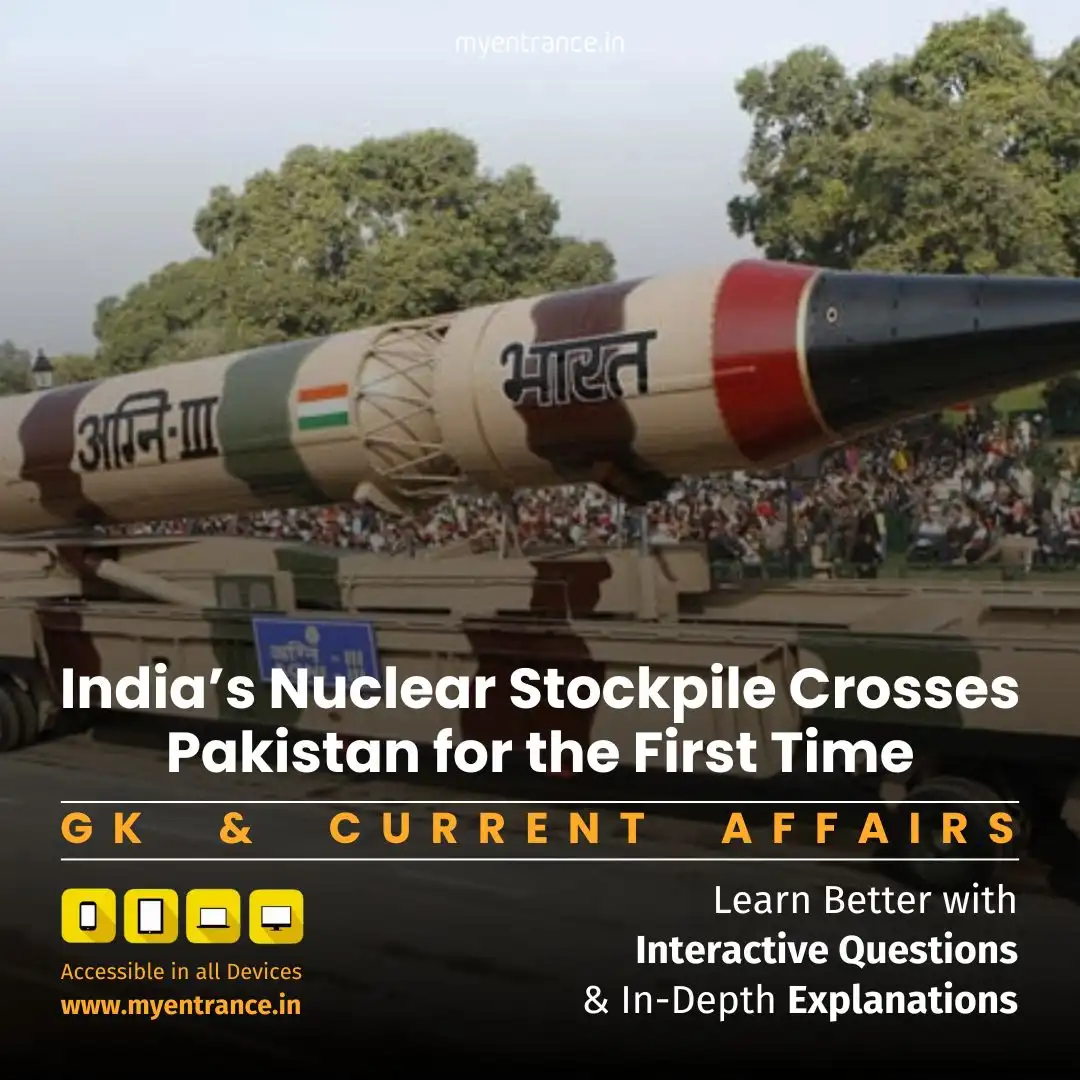Select Language
Agni-5 & MIRV Tech: How India’s Nuclear Arsenal Just Surpassed Pakistan
In a significant strategic shift, India has overtaken Pakistan in nuclear warhead count for the first time. The development comes alongside advancements in India’s missile technology, including the Agni-5 with MIRV capabilities.
India’s Nuclear Stockpile: A Strategic Shift
Recent reports from global arms monitoring agencies reveal that India now possesses approximately 180 nuclear warheads, surpassing Pakistan’s estimated 170. While the numerical difference may seem minor, the technological advancements behind India’s arsenal tell a deeper story.
Key Developments in India’s Missile Program
Agni-5 Missile: With a range exceeding 5,000 km, it can target regions deep into Asia, Europe, and Africa.
MIRV Capability (Multiple Independently Targetable Re-entry Vehicles): Allows a single missile to strike multiple targets simultaneously—a feature previously limited to the US, Russia, and China.
Agni-P Missile: A modern, road-mobile system designed for rapid deployment, enhancing second-strike survivability.
Unlike Pakistan, which has maintained a steady nuclear count, India’s focus has shifted toward precision, mobility, and stealth. The Agni series, particularly the Agni-5, represents a leap in deterrence credibility, ensuring India can respond effectively to potential threats.
Why This Matters
Strategic Deterrence: India’s nuclear doctrine emphasizes “No First Use” (NFU), meaning its arsenal is primarily for retaliation.
China’s Rapid Expansion: China’s nuclear stockpile surged from 500 to 600 warheads in just a year, pushing India to bolster its defenses.
Regional Stability: With aging arms control treaties expiring and no new agreements in place, South Asia’s security dynamics are evolving.
Sample Questions & Answers (FAQs)
1. How many nuclear warheads does India currently have?
India is estimated to possess 180 nuclear warheads, slightly ahead of Pakistan’s 170.
2. What makes the Agni-5 missile special?
The Agni-5 is India’s longest-range missile (5,000+ km) and is expected to soon integrate MIRV technology, allowing it to hit multiple targets with a single launch.
3. How does India’s nuclear policy differ from Pakistan’s?
India follows a “No First Use” (NFU) policy, while Pakistan maintains a first-strike option to counter conventional military disadvantages.
4. Is China’s nuclear growth a concern for India?
Yes. China’s arsenal expanded by 100 warheads in just one year, prompting India to modernize its missile systems for credible deterrence.
5. What is the significance of MIRV technology?
MIRVs make missile defense systems less effective, as a single missile can deploy multiple warheads, complicating interception efforts.
Most Predicted Questions
Comprehensive study materials, Expert-guided tips & tricks, Mock tests and instant results.
Start your SSC, NIFT, NID, FDDI, PSC journey today with MyEntrance, your ultimate online coaching platform.







